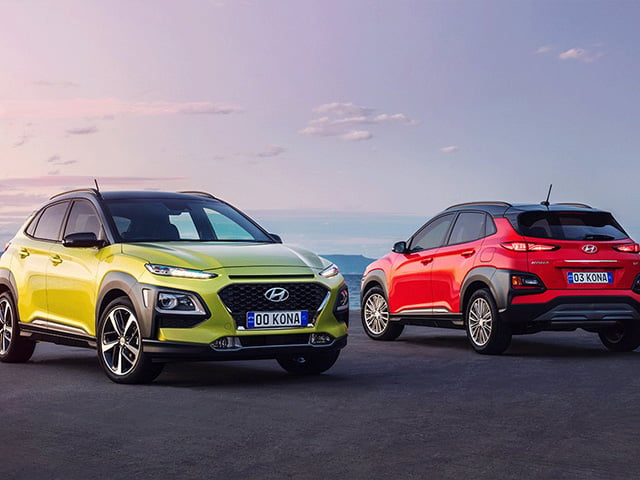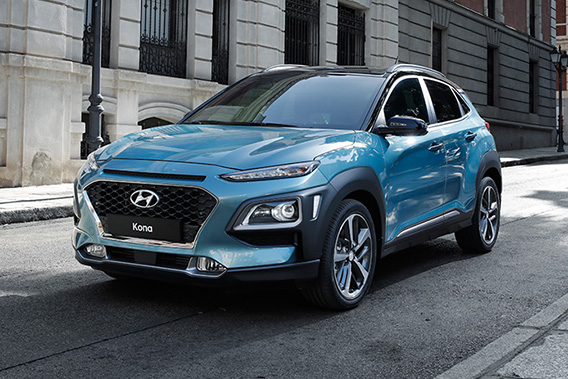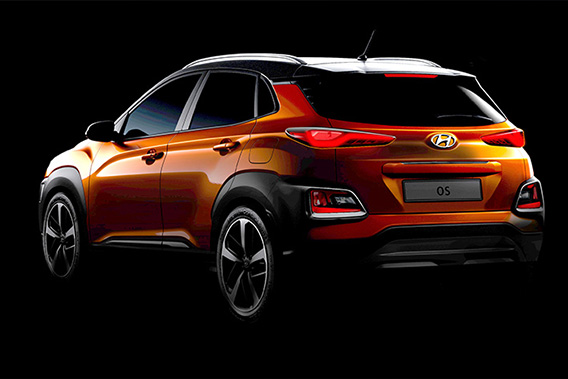
TELL ME ABOUT THIS CAR
Since 2011, the market for compact SUVs has exploded around eight-fold, but Hyundai has watched its Japanese rivals carve it up between them. A company normally renowned for the alacrity of its market responses has finally arrived at the party with the Kona, a car based on a modified version of the i30 hatchback platform. Vehicles like the Mazda CX-3, Mitsubishi ASX and Honda HR-V now have a very serious rival to contend with.
Aussie buyers get to choose between a 2.0-litre petrol engine or a more powerful 1.6-litre turbo petrol unit. The differences then extend far beyond what’s plumbed under the bonnet. Choose the 2.0-litre and it drives the front wheels through a six-speed automatic transmission. Opt for the 1.6T and you get part-time all-wheel drive, a seven-speed twin-clutch auto and slicker multi-link rear suspension.
Forget that reputation Hyundai forged as being significantly cheaper than its rivals. Although the five-seat Kona is pretty well stuffed with equipment, prices start at $24,500 (AUD) and top out at $36,000 (AUD). As a rough guide, the 1.6T engine tends to add around $3,500 (AUD) to the price of the 2.0-litre. There are three key trim levels, Active, Elite and range-topping Highlander and both engines are offered with all three trim variants.
STRENGTHS
- The styling is bold and interesting, with split headlamps and daytime running lights, a strong-looking stance and rugged ‘body armour’ cladding.
- It’s surprisingly big inside. That wheel-at-each-corner look means that there’s a decent amount of room in the passenger cell. If you’ve tried a car in this class and found it a bit pinched, the long wheelbase Kona could make you think again.
- The 1.6-litre turbo engine has real pull and flexibility. All-wheel drive traction helps it to a 0-100km/h time of just 7.9 seconds.
- The brakes are hugely impressive, with real bite, great pedal feel and you can modulate them with real sensitivity.
- There’s stacks of standard equipment. Even the entry-level car gets gear like a rear view camera, dusk-sensing headlights, Android Auto and Apple CarPlay connectivity, a touch screen multimedia system, and leather trim for the steering wheel and gear knob.
- The steering wheel controls are particularly sensible. You’ll be operating the phone, audio and cruise control functions without fumbling or taking your eyes of the road in no time.
- The boot is a respectable size for a car of this class. At 361 litres with the rear seats and tonneau cover in place, it’s 11 litres bigger than a Mazda CX-3 for example, but still a good way shy of the 393-litre Mitsubishi ASX luggage bay.
- Go for the top Highlander variant and it gets Qi wireless inductive phone charging, heated and ventilated seats, a heated steering wheel, a head-up display, LED lights and 18-inch alloys.
WEAKNESSES
- Autonomous Emergency Braking isn’t fitted as standard on the entry-level Active version, and to get it you need to pay $1500 (AUD) for a safety pack which also bundles in gear like folding and heated mirrors.
- The ride quality on larger wheels is a little firmer than some might expect, but that doesn’t translate into CX-3-like beautiful body control.
- There’s a price to be paid for all that equipment. At the top end of the range, the Kona looks conspicuously expensive. Hyundai clearly has enough confidence in its badge equity to stand these prices up.
- The multispoke 16-inch wheels aren’t the prettiest alloys we’ve ever seen. Active trim buyers might well want to spring for the 17-inch alloys (as seen on the Elite trim), which will also net you superior Continental tyres.
- There’s no standard inbuilt sat nav available at any price. Hyundai reasoned that most buyers prefer to port the nav systems on their smartphones. We’re not so sure about that.
- It’s a big step up in price between Elite and Highlander trim levels.
ANY RIVALS I SHOULD CONSIDER?
The Hyundai Kona specifically targets five key Japanese rivals, identified as the Mitsubishi ASX, Mazda CX-3, Honda HR-V, Subaru XV and Toyota CH-R.

